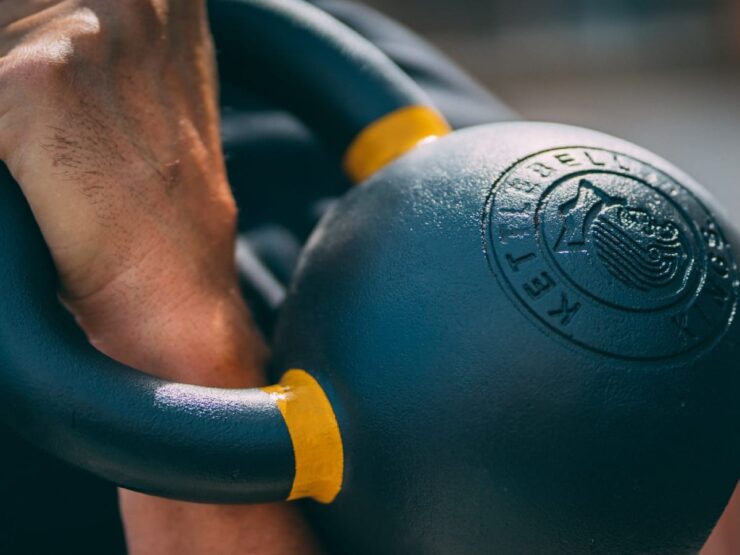Are you ready to take your fitness journey to the next level and unleash the full potential of your strength and power? If so, it’s time to get acquainted with the kettlebell half snatch. This dynamic exercise isn’t just your run-of-the-mill gym routine; it’s a full-body powerhouse that will challenge your strength, test your coordination, and leave you feeling like a force of nature.
But before you dive headfirst into the world of kettlebell half snatches, it’s crucial to arm yourself with the knowledge and techniques to ensure your safety and success. In this blog, we’ll guide you through the essential tips for mastering the kettlebell half snatch, allowing you to confidently embrace this exercise and propel yourself toward your fitness goals.
Master the Basics First
Before attempting the kettlebell half snatch, having a solid foundation in kettlebell training is crucial. Start with fundamental exercises like kettlebell swings and cleans to develop strength, stability, and technique. Proper form is essential in minimizing the risk of injury, so spend time perfecting your kettlebell basics before progressing to the half snatch.

Choose the Right Kettlebell Weight
Selecting the appropriate kettlebell weight is vital for safety and progress. Begin with a weight that permits you to complete the exercise correctly and with control. Men often begin with a 16-20kg kettlebell, while women typically start with an 8-12kg kettlebell. Gradually increase weight as strength and confidence increase.
Warm-Up Thoroughly
Warming up is crucial for preparing your muscles and joints for the demands of the kettlebell half snatch. Spend 5-10 minutes on dynamic stretches and mobility exercises like hip circles, arm circles, and leg swings. It increases mobility and lessens the risk of injury.
Focus on Technique
The kettlebell half snatch is a complex movement that requires precise technique. Key points to keep in mind include:
- Maintain a neutral spine throughout the exercise.
- To begin the method, hinge at the hips, holding the kettlebell close to your body.
- Use your hips and legs to generate power, not just your arms.
- Keep your core engaged and your shoulder packed to protect your shoulder joint.
- Practice the movement with a lighter kettlebell until your technique is flawless.

Gradual Progression
Like any exercise, progressing too quickly can lead to injury. Instead, focus on gradual progression. Increase the weight or repetitions slowly to give your body time to adapt. Remember, consistency is critical in kettlebell training.
Pay Attention to Recovery
Recovery is an essential aspect of safe progress in kettlebell half-snatch exercises. Adequate sleep, proper nutrition, and stretching or foam rolling can help your muscles recover and prevent overuse injuries. Remember to incorporate rest days into your training schedule to allow your body to heal and regenerate.
Seek Professional Guidance
If you’re new to kettlebell training or need clarification on your technique, consider working with a certified instructor. They can provide personalized guidance, correct your form, and help you progress safely.
Stay Motivated
To stay motivated in your Kettlebell Half Snatch journey, set realistic goals following the SMART criteria, track your progress through journals and measurements, and consider joining a kettlebell community, whether a class, online group, or accountability partner. Having clear objectives, visible results, and a supportive community can keep you inspired and committed to your kettlebell training.

Are There Any Common Mistakes to Avoid?
Yes, there are several common mistakes to avoid when performing the kettlebell snatch exercise to ensure safety and effectiveness. Here are some of the most common errors to watch out for:
Poor Hip Engagement
Please properly engage your hips and legs; this is a common mistake. Initiate the snatch with a strong hip hinge and extension rather than relying solely on an upper-body pull. Make sure to use your hips to generate most of the force.
Lack of Shoulder Stability
Pulling your shoulder out of position during the snatch can lead to shoulder injuries. Keep your shoulder “packed” by pulling it down and back, away from your ear, to maintain stability throughout the movement.
Rounding the Back
Maintaining a neutral spine is crucial. Avoid rounding your back during the snatch, as this can place excessive stress on your lower back and increase the risk of injury. Keep your back flat and chest up.
Not Using a Controlled Pace
Rushing through the snatch without control can compromise your form and safety. Start with a controlled pace, focusing on technique and proper mechanics. As you gain proficiency, you can increase your speed.

Using Too Much Weight Too Soon
Take your time using heavy kettlebells. Start with a weight that allows you to maintain good form and gradually progress as you become more comfortable with the exercise.
Incomplete Lockout
Ensure you fully extend your arm and lock your elbow at the top of the snatch. An incomplete lockout can lead to shoulder strain and reduce the effectiveness of the exercise.
Neglecting the Swing Phase
The snatch should transition smoothly from the swing to the overhead position. Neglecting this phase can lead to an inefficient and awkward snatch.
Failing to Master the Half Snatch First
Attempting the full snatch without first mastering the half snatch can lead to improper technique and an increased risk of injury. Build a solid foundation with the half snatch before progressing.
Not Paying Attention to Breath
Breath control is essential during the snatch. To generate power, inhale at the bottom of the movement and exhale as you extend your hips. Proper breathing helps stabilize your core and provides strength.

Skipping Warm-Up
Neglecting a proper warm-up can increase the risk of muscle strains or injuries. Always warm up with dynamic stretches and mobility exercises before performing snatches.
Conclusion
The kettlebell half snatch is a movement that embodies strength, agility, and control, and mastering it can be your gateway to unlocking new levels of physical prowess. Remember, while we’ve covered essential tips for safely progressing in kettlebell half-snatch exercises, your journey is beginning. Embrace the learning process, respect your body’s limits, and gradually build strength and skill. The effort will pay off with more power, coordination, and self-confidence.
So, pick up that kettlebell, and let the half-snatch become your secret weapon in pursuing your fitness goals. As you refine your technique and push your boundaries, you’ll discover that this exercise is about building muscle and becoming your best version. Keep going, stay safe, and watch yourself soar to new heights of fitness and athleticism. Your kettlebell journey awaits!

